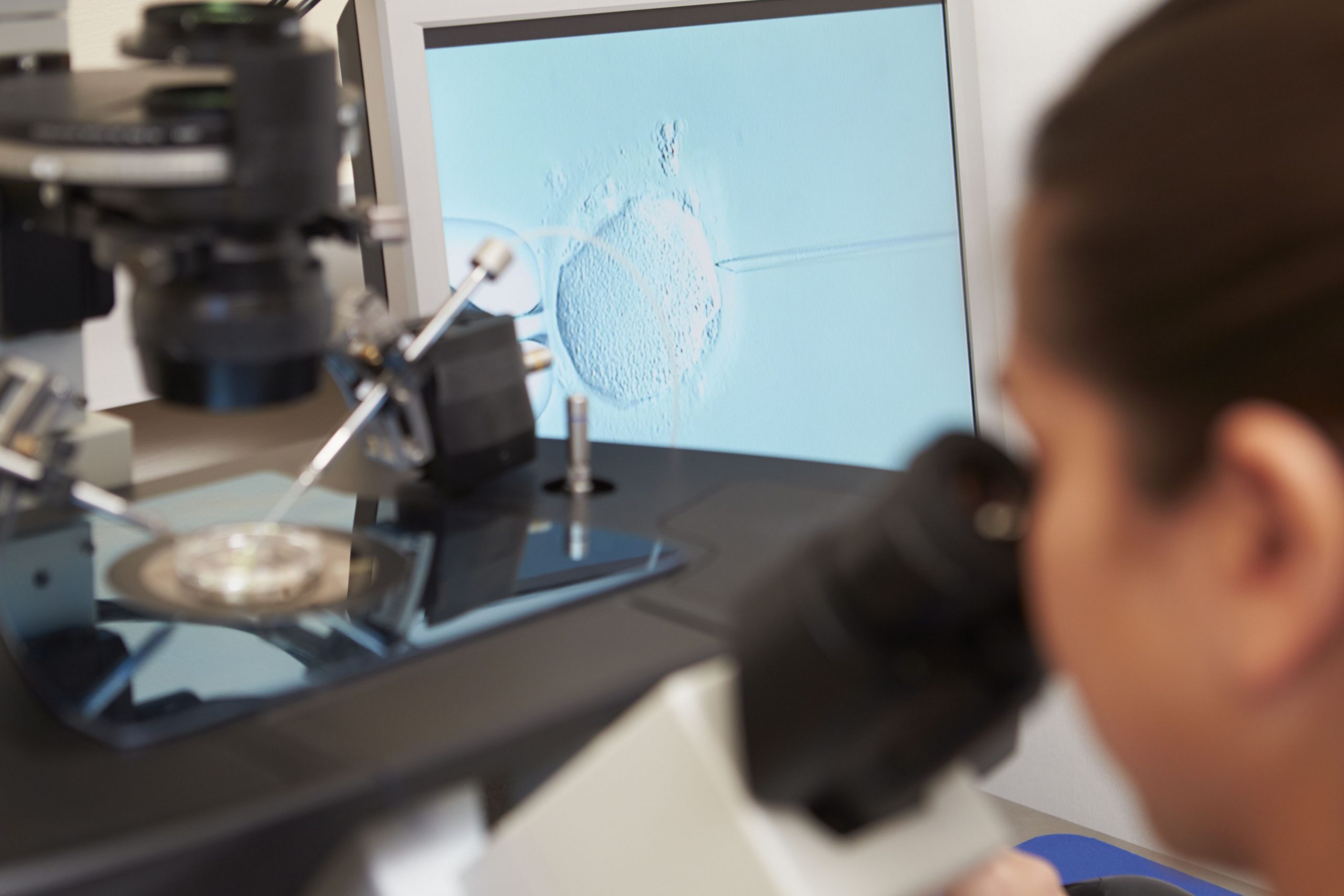The in vitro laboratory is a place where biological and medical miracles take place. If you are wondering how work goes behind the closely guarded door, how reproductive cells are developed, how embryos are looked after and how embryologists work, then read…

The in vitro laboratory is a place where biological and medical “miracles” take place. If you are wondering how work goes behind the closely guarded door, how reproductive cells are developed, how embryos are looked after and how embryologists work, then read …
Diagnostics of infertility and in vitro fertilization are extremely complex processes and require extraordinary care. The accompanying procedures require 100% perfectionism, commitment and the use of modern methods and technologies. In the embryological laboratory, under the microscope and in “glass”, fertilization procedures are performed. It also breeds embryos that are transferred to the womb of a woman on the 3rd or 5th day.
In vitro procedure – embryologist’s view
The clinical embryologist is responsible for the proper conduct of the in vitro procedure, cryopreservation of embryos and gametes, the performance of tests and analyzes in the in vitro laboratory. The first stage of his work begins when the patient receives oocytes after the end of hormonal stimulation. The collected oocytes are enzymatically purified from their follicular cells, their quality is assessed, and then combined with the semen of the partner or anonymous donor. Working with gametes requires extraordinary precision and specific environmental conditions. All activities related to collection, storage and fertilization are carried out according to restrictive procedures, on heated worktops, usually under a stereoscopic or inverted microscope.
“To increase the effectiveness of the fertilization process, individual spermatozoa (purified, boosted, centrifuged) are selected from the sperm developed and injected into the interior of MII stage oocytes. In the procedure, we use delicate manipulations of individual sperm thanks to instruments, needles, manipulators, inverted microscopes. ” – dr biol. Wojciech Sierka, embryologist at the Gyncentrum Clinic.
For the embryo to feel like in the womb…
The modern IVF laboratory, thanks to the solutions used, is a zone free of toxins, various impurities, volatile organic compounds and perfumes. Modern technologies allow the creation of conditions in incubators similar to those prevailing in the uterus. What’s more, it is possible to introduce mechanical musical vibrations into the incubator. Due to the delicate sound shocks, possibly toxic metabolites (including ammonium ions) disperse naturally in the medium and do not surround the embryo immobilized.
A properly developed embryo
Obviously, pregnancy is considered a success in the in vitro procedure. In order for this wonderful moment to happen, the key is proper cell division. As soon as 24 hours after the egg is connected to the sperm, it can be determined with certainty whether fertilization has occurred. On what basis will the embryologist know that fertilization “in glass” went well? This is evidenced by the presence of two spherical pronuclei in the center of the oocyte. The fertilized egg is transferred to a new culture medium, where each division day is observed. The embryo should divide from the stage of a single cell to the structure of more than a hundred cells called a blastocyst. Early blastocyst begins to fill with fluid (like a balloon) and its development ends with hatching of blastocyst, which is a necessary condition for implantation in the uterus.
Embryo transfer
Usually, embryos are transferred by a doctor with a special catheter to the womb of a woman after three or five days of hatching. If the procedure is correct, the typical date for implantation is 6 to 10 days after oocyte collection. The transfer can be preceded by a genetic endometrial receptivity test that will indicate when the patient has the most suitable uterine endometrium to accept the embryo (when the implantation window is open).
Preimplantation diagnostics
Couples who are at high risk of inheriting genetic defects by their child may consider performing genetic diagnostics (PGT-A, PGT-M) prior to embryo transfer. The procedure is performed between 3 and 5 days of embryo culture. The embryologist acquires one embryonic cell or blastocyst fragment and the genetic laboratory performs the appropriate analysis. For many couples, performing preimplantation diagnostics in an in vitro procedure is the only chance to have a healthy child.
If you want to postpone motherhood for later – cryopreservation
Freezing embryos has long ceased to be a taboo subject. For many couples, this solution turned out to be the last lifeline on the road to parenthood. Cryopreservation is a conscious action that allows you to postpone parenting. What does this procedure look like in a laboratory approach?
Between days 3 and 6 of culture, embryos not transferred to the patient’s uterus may be frozen for future use. The gametes themselves are also cryopreserved in liquid nitrogen. This solution can be used, for example, by people with cancer problems who would like to preserve their gametes for the future. Modern freezing, i.e. vitrification, is a new chapter in embryo freezing. The introduction of this new technique into the IVF laboratory significantly increased the survival rate of the embryos, completely eliminating the water factor (harmful ice).
Gyncentrum’s lab
The in vitro laboratory of the Gyncentrum clinic is one of the most modern in Poland. In vitro fertilization procedures are performed here using IVF, PICSI, ICSI, IMSI and IMSI – MSOME methods. The clinic also has an andrological laboratory in which male semen is examined. Specialists using the SCA computerized semen analyzer can assess, among others sperm motility and density, their structure, viability, and sperm DNA. In Gyncentrum Laboratories, patients have the option of cryopreservation of male and female germ cells. Put simply, it is freezing gametes – this solution can be used, for example, by people with cancer who are afraid of their fertility after chemo or radiation therapy. In the laboratory, in liquid nitrogen, at -196 degrees C, embryos and oocytes as well as sperm are frozen. Gyncentrum laboratory facilities are constantly developing! Genetic laboratories that specialize in the diagnosis of genetically determined reproductive failures deserve additional attention. For more information on this subject, please visit https://www.gyncentrum.co.uk/preimplantation-genetic-diagnosis-pgd-pgs-ngs. A comprehensive diagnostic approach is the foundation for understanding the causes of infertility, treating the problem, and overseeing the correct fertilization process.





